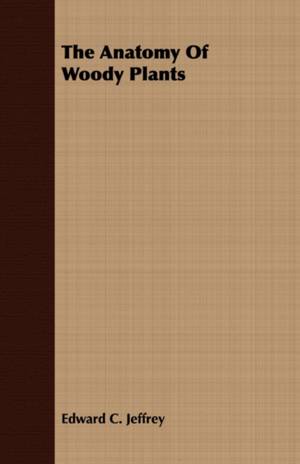
- Retrait gratuit dans votre magasin Club
- 7.000.000 titres dans notre catalogue
- Payer en toute sécurité
- Toujours un magasin près de chez vous
- Retrait gratuit dans votre magasin Club
- 7.000.000 titres dans notre catalogue
- Payer en toute sécurité
- Toujours un magasin près de chez vous
Description
THE ANATOMY OF WOODY PLANTS . PREFACE It is now forty years since De Barys classic Comparative Anatomy of the Vegetative Organs of the Phanerogams and Ferns made its appearance. In the interval much has been added to our knowledge, particularly in the paleobotanical and experimental fields. The doctrine of descent, too, has now reached a degree of prominence and importance which it did not possess in De Barys time. As a consequence, it is desirable that the general subject of the anatomy of the woody or so-called vascular plants should be reviewed, with special reference to its historical and experimental aspects. This is perhaps all the more desirable as an effective counterpoise to the extreme mechanistic tendencies of the time. It will accordingly serve a useful purpose to indicate how large a part of the organization of existing plants is an inherit- ance from their ancestors of earlier geological times. In De Barys textbook both paleobotany and development are deliberately eschewed. The first of these is now essential for any adequate comprehension of comparative anatomy in its all-important evolutionary aspects. It is abundantly clear that the most fruitful results from the standpoint of the doctrine of descent are to be derived from the comparative study of extinct and existing plants belonging to the same orders, families, or genera. It is, moreover, obvious that the living forms cannot be interpreted without a knowledge of their past, and that to an even greater degree the organization of fossil plants is a closed book to those who are unfamiliar with the anatomy of allied and still living types. The wide range of facts which must of necessity be covered calls for a somewhat brief and even elementary treatment. Fortunately, since De Barys time, it has become more and more evident that the study of the development of organs and tissues throws little trustworthy light on the processes of evolution, and consequently that aspect of our subject need receive no more attention than was vouchsafed to it by the great German anatomist nearly half a century ago. In the seventeenth chapter are summarized the important general principles derived from the investigation of related living and extinct organisms. The beginning of the studies leading to the formulation of these anatomical canons stands largely to the credit of French and English paleobotanists. Since they have worked mainly with Paleozoic types, their activities have been preponderantly in the direction of comparisons between the organization of the earlier cryptogams and gymnosperms and their still living survivors. It has been in some measure the good fortune of American anatomists to continue the lines of investigation thus begun and to extend them to the study of Mesozoic and still living gymnosperms. The extremely harmoni- ous conclusions resulting from the anatomical comparison of both Paleozoic and Mesozoic forms with their surviving descendants have justified the extension of the same principles to the evolu- tionary investigation of other woody plants particularly to the angiosperms, concerning the geological past of which we are still ignorant...
Spécifications
Parties prenantes
- Auteur(s) :
- Editeur:
Contenu
- Nombre de pages :
- 492
- Langue:
- Anglais
Caractéristiques
- EAN:
- 9781406716344
- Date de parution :
- 09-10-07
- Format:
- Livre broché
- Format numérique:
- Trade paperback (VS)
- Dimensions :
- 140 mm x 216 mm
- Poids :
- 616 g







